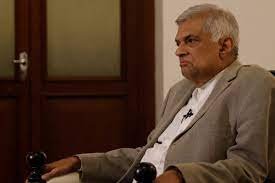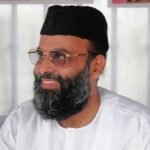In a significant move to enhance bilateral relations, Sri Lankan President Ranil Wickremesinghe embarked on a two-day official visit to India. During his visit, he engaged in talks with India’s top leadership, including Prime Minister Narendra Modi, to further advance and consolidate ties between the two nations.
This visit holds particular significance as it marks President Wickremesinghe’s first trip to India since assuming office last year following the ousting of Gotabaya Rajapaksa in a people’s uprising in July. The 74-year-old leader commemorated the first anniversary of his presidency, making the timing of the visit all the more noteworthy.
President Wickremesinghe’s departure to India was at the invitation of Prime Minister Narendra Modi, demonstrating the mutual commitment to strengthening cooperation and collaboration between the two neighboring countries.
The discussions between the leaders centered on various aspects of the bilateral relationship, aiming to boost economic, political, and strategic ties. Both sides emphasized the importance of enhancing trade and investment opportunities, fostering cultural exchanges, and collaborating on regional security matters.
India and Sri Lanka have a long history of cooperation and shared interests, and this visit presented an opportunity to reiterate their commitment to each other. President Wickremesinghe expressed his appreciation for India’s support and assistance during Sri Lanka’s challenging economic times.
Prime Minister Modi, on the other hand, reaffirmed India’s commitment to assisting Sri Lanka in its economic recovery and development endeavors. The leaders also discussed the need to address regional challenges, including maritime security and counterterrorism efforts.
Beyond diplomatic discussions, President Wickremesinghe engaged in a series of high-level meetings with Indian officials and business leaders to explore avenues for increased investment and collaboration in various sectors. The goal was to foster economic growth and job opportunities in both countries.
During the visit, President Wickremesinghe also visited significant cultural and historical sites in India, signifying the cultural ties that bind the two nations together. Such cultural exchanges were seen as pivotal in promoting people-to-people connectivity and mutual understanding.
The two-day visit concluded with both leaders expressing satisfaction at the progress made in furthering bilateral relations. They highlighted the significance of frequent high-level engagements to maintain the positive momentum and address any challenges that may arise.
The visit of President Wickremesinghe to India received extensive coverage in both countries’ media. Newspapers and television channels highlighted the warm reception extended by the Indian government and its commitment to fostering a robust relationship with Sri Lanka.
The visit also garnered attention on social media, with citizens from both nations expressing their support for stronger ties and regional cooperation. Hashtags like #IndiaSriLankaFriendship and #StrongerTogether were trending during the visit.
As President Wickremesinghe returned to Sri Lanka, the sentiment was that the visit had further solidified the friendship between the two nations and opened new avenues for collaboration. It was perceived as a stepping stone to achieve greater economic prosperity and regional stability.
President Ranil Wickremesinghe’s two-day official visit to India served as a crucial opportunity to strengthen bilateral relations between the two neighboring countries. With a focus on economic cooperation, cultural exchanges, and regional security, the leaders reemphasized their commitment to working together for the mutual benefit of their nations. The visit was hailed as a success and laid the foundation for enhanced collaboration in the future, fostering a strong and enduring friendship between India and Sri Lanka.




